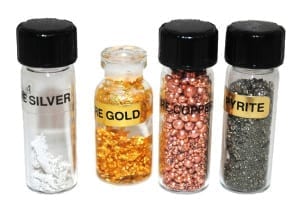 Precious metals have long been used as status symbols, so it is no surprise to find them adorning prestigious royal and religious textiles. Even though metal thread embroideries and weavings have been desired by pharaohs, queens, and sultans for centuries, they have also been found in Asian court repositories and medieval tombs.
Precious metals have long been used as status symbols, so it is no surprise to find them adorning prestigious royal and religious textiles. Even though metal thread embroideries and weavings have been desired by pharaohs, queens, and sultans for centuries, they have also been found in Asian court repositories and medieval tombs.
- This 1870’s Masonic apron is embroidered with silver and gold-wash metallic threads, ribbon, and bullion fringes.
- Detail of Masonic apron, c. 1870.
Metallic cloths, although cold to the touch and heavy to wear, are prized for their sparkle and sheen. Imagine sunshine on the silver thread in an Indian sari, or candlelight dancing on the embroidered inscriptions of a Muslim door cloth. Images of saints wrought in gold glimmer on the silks and velvets of a Renaissance chasuble (vestment). Even the military is not immune to this precious metal dandyism, with dress uniforms adorned with shining golden epaulettes, frogs and insignia.
Gold, which is highly malleable and rust-free, is the most expensive and prized of the materials, but it is rarely used in its pure form. Most often it is rolled into a cord, or pounded flat and wrapped around a silk or cotton core – called Passing. It can then be embroidered, twisted, couched or tied onto fine fabrics.
- Gold metallic thread embroidery adorns a 19th Century western Indian maharaja’s cap – shown before…
- …and after surface cleaning.
Some textiles are named for the content of the gold thread used, such as in the Siamese court. One of the most sumptuous and expensive cloths (often produced in India) was a silk and metallic thread brocade which contained more than 75% gold and was called “jer a bab.”
Types of metallic threads have exotic and evocative names like jaceron, lizerine, bullion, crimped purl, faconee, crinkle cordonnet, rococo, and soutache braid.
There is even a Thai hammered thread named for the shape of woman’s breast – แล่งนมสาว or “Lang-nom-saaw,” (“nom” = breast, “saw” = woman). This particular type of thread is similar to the one used in the Western Indian ladies slipper below.
- Here are a pair of elegant court ladies slippers from Western India, 19th Century, with crimped, hammered silver, pearls and metal sequins.
- Our treatment involved cleaning the metal components, and couching the springy wire pieces onto the shoes.
- Detail of court slippers.
Silver, copper and other alloys are also used in textiles, each type oxidizing and darkening in a different way. Cleaning metallic threads is a delicate process. A few very gentle and non-intrusive methods can often provide a little twinkle of what the textile once looked like. Unfortunately, it is not a permanent treatment, as all metals will continue to oxidize and tarnish.
What is your favorite metallic thread textile? Do you have a uniform with gold thread or a gown with silver filaments? We’d love to hear your thoughts.
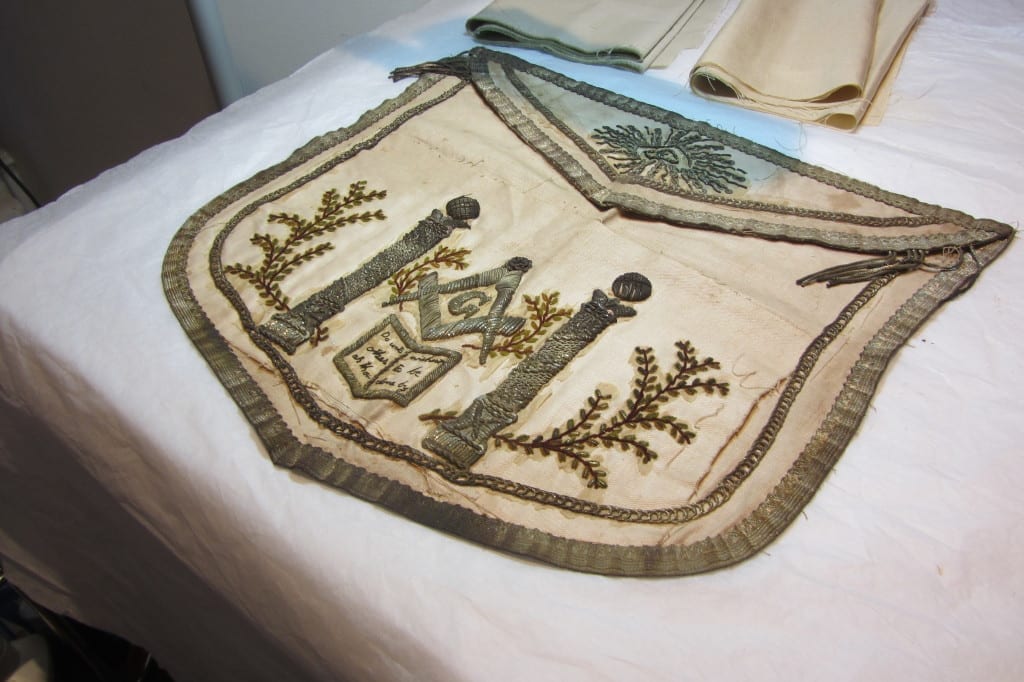
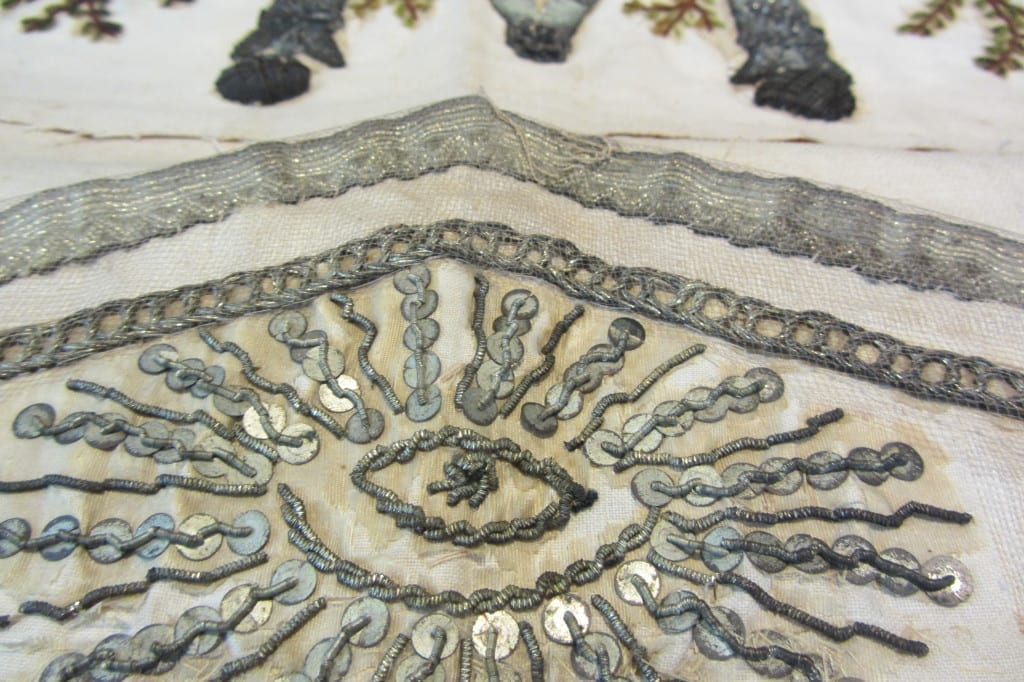

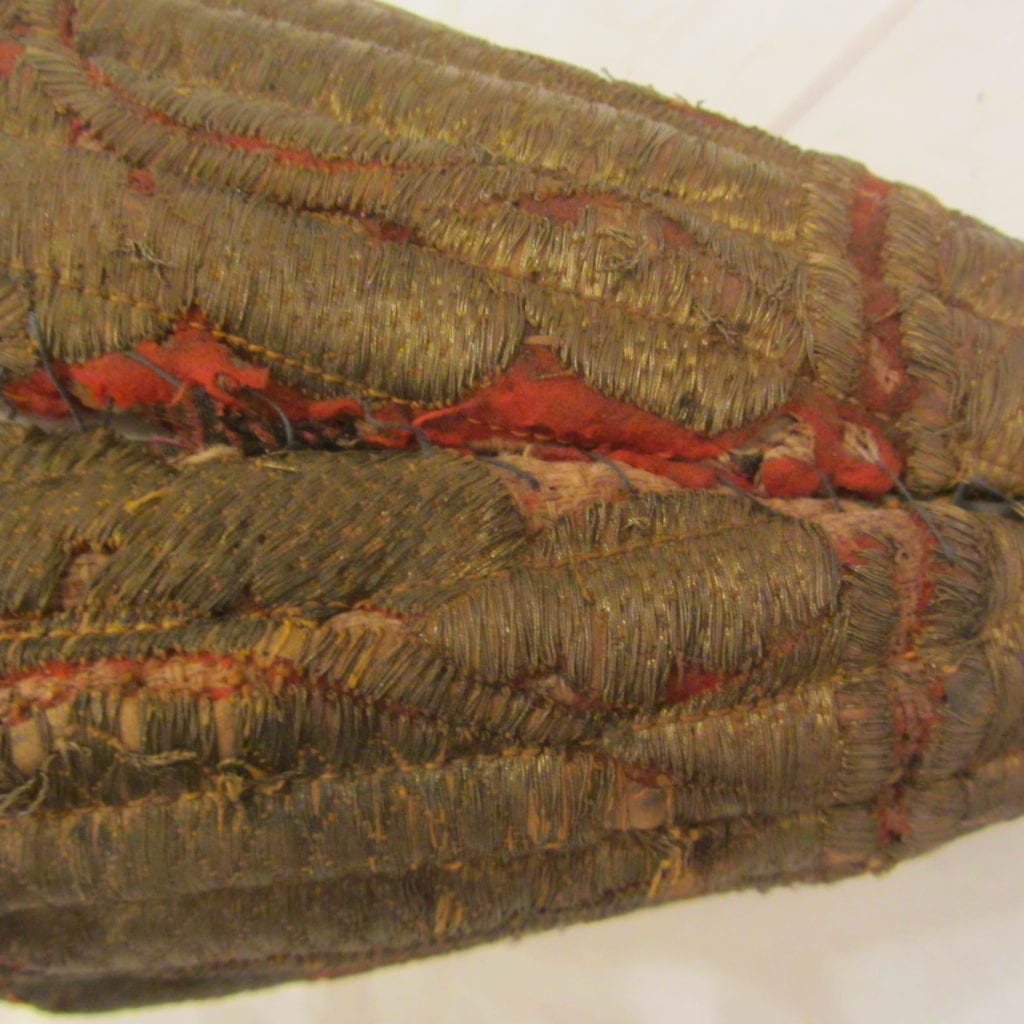
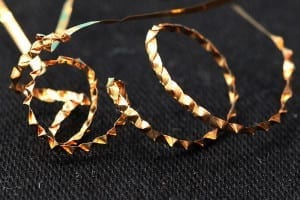
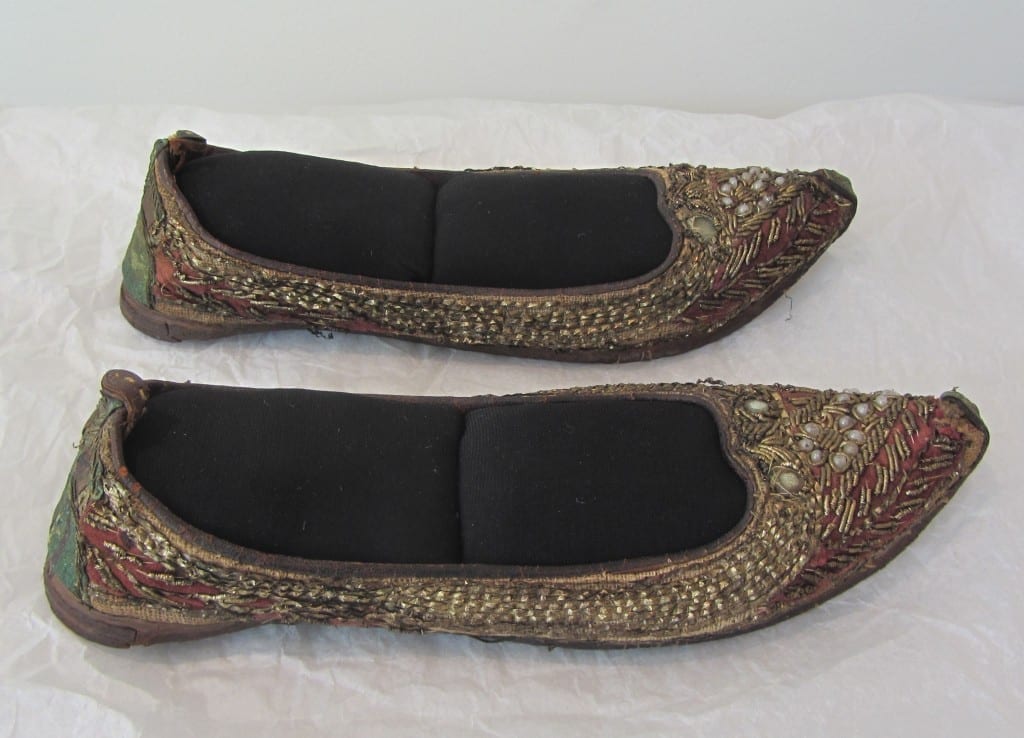
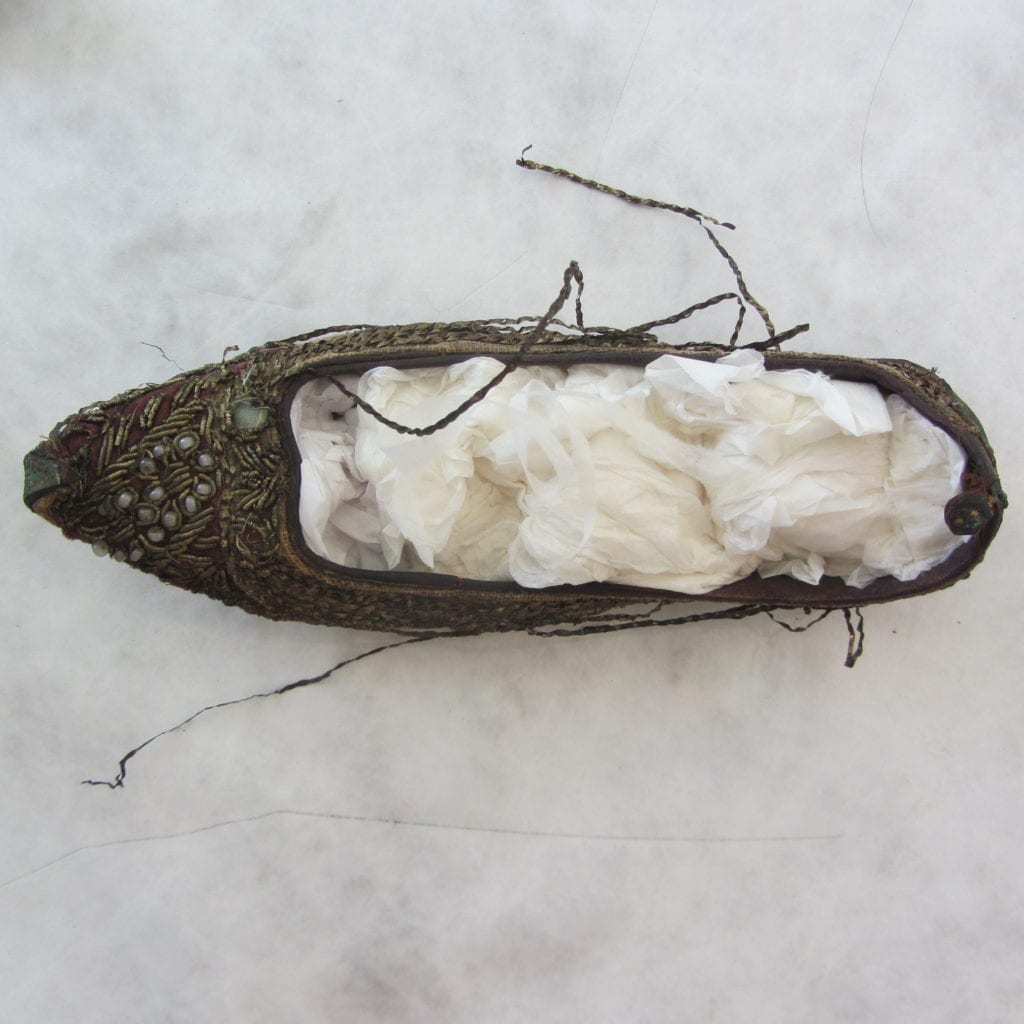
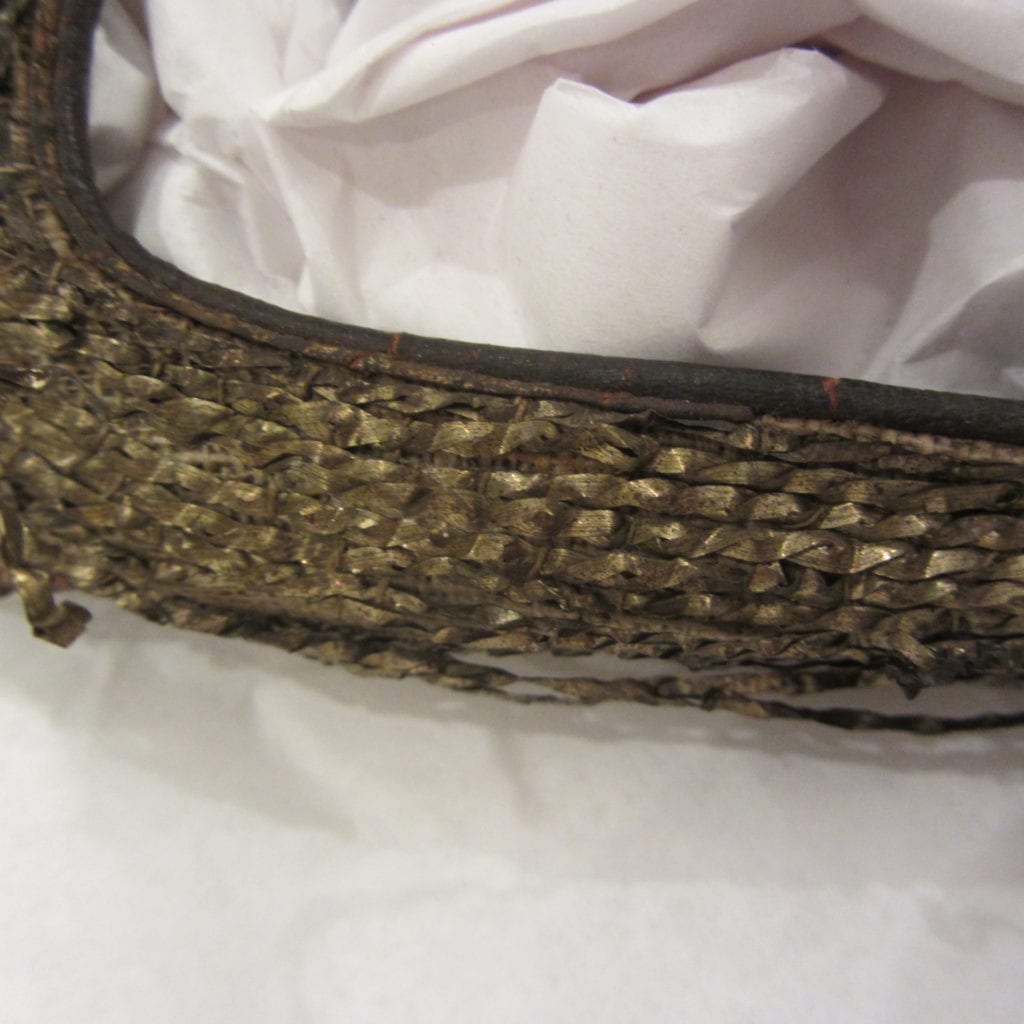

Julia – what do you recommend for the various types? I tried a little tarnoff and also ammonia, but neither did much. Now when hunting through metallic adorned textiles, I only purchase those that still have sheen. Learned my lesson trying to restore items that had already oxidized (turned completely brown).
Hi , I’m textile conservator from İstanbul TURKEY. You can send me metal materials while textile cleaning proses?
Best regards.
Nice article, Julia, and beautiful images! Keep up the good work, and see you soon!
So, what was the method used to surface-clean the mahaeraja’s cap?
I am considering a project that could use that level of improvement.
Actually I used very soft cosmetic sponges to remove a lot of black soiling first. Then ethanol swabs and then dry swabs to remove some tarnish. I did not want to make it sparkly, and did not want to abrade the surface of the threads anymore than they already were. I Hope this is helpful.
How do you clean silver threads in a sari? Thank you!
Hi. I have lots of traditional outfits which have gold and silver thread heavy embroidery. But over the years they have darkened from places. I wanted to know is there any way to clean the silver/gold embroidery without ruining the fabric.
Many thanks
Regards
Amina
I am also curious how to clean/polish zardozi on Indian embroidery. It would be a shame to throw away these extravagant trousseaus and I want to fix them if I can